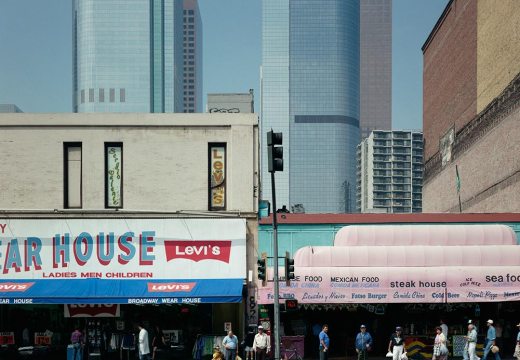The US now has a really good national museum of design. The Cooper Hewitt Smithsonian Design Museum, reopened on 12 December, already had a great collection but its setting in steel magnate Andrew Carnegie’s oak-lined New York mansion was a bad fit.
All this has changed, without losing the mansion’s historic setting. As Caroline Baumann, the Cooper Hewitt’s director put it: ‘We are the nation’s design museum, so we have had a dream team of designers.’ Every inch of the museum has been meticulously considered, then renovated, amended, changed or, occasionally, done away with. Any historical details that were removed have gone into store; the mansion is now suitably reclothed top to bottom for the job it does.
Gluckman Mayner Architects and Beyer Blinder Architects & Planners have rethought bedroom spaces, ingeniously added a huge freight lift and extra staircase, and generally made the building more flexible. There are now four floors of galleries, which increase permanent display space five-fold and temporary exhibition space by 60 per cent. All this without building a flashy extension (though staff and the National Design Library are now in two neighbouring town houses) or losing the ambience of Carnegie’s mansion. Others in Baumann’s 13-firm ‘dream team’ include Diller Scofidio + Renfro, Hood Design, Goppion S.P.A. and Pentagram, whose Chester Jenkins has designed the museum’s own free-access font, Cooper Hewitt.
There is so much that is very good and refreshingly intelligent about this museum. The permanent collection displays, which now fill a whole floor, will be changed regularly; media and periods have been mixed up to create thought-provoking groups so that, for instance, Jacques Sarazin’s drawing for a garden sculpture made in 1632 is near Frank Gehry’s Cloud Pendant Lamp (2005). Selections from the museum’s outstanding collection of 30,000 or so textiles are integrated into these displays, but local favourites are given their own focus: a former Carnegie dressing room holds a group of delicate 19th-century birdcages.
Technology enhances the visitor’s experience, rather than providing toys with little to learn from. To encourage curiosity, from early in 2015 each visitor will be given a special pen which, on contact with an object’s label, will collect in-depth information that the visitor can send to and save on their own computer. The museum is adding videos to its website, which show designers discussing their challenges and solutions, and how designs become products. In the permanent collection, several galleries have touchscreen tables where the visitor can explore the design possibilities of a nearby object and even try to solve a design problem or create a new object-inspired design. In the wallpaper room, it is possible to select one of the museum’s 10,000 examples, or create your own, and project it on to two walls to see how it would really look.
To celebrate this achievement and to show off the range, depth and quality of their 200,000-piece collection for the first time, ten opening exhibitions display some 700 objects. One is ‘Tools’, where objects spanning two million years have been drawn from across the 138 million objects held by the Smithsonian Institutions’ many museums and collections, the first such collaboration.
Given the vast amounts that some US museums are spending on relatively small improvements that do not always benefit the collection or their education obligations, it is impressive that this whole renovation cost just $81 million (with another $10 million raised for its endowment) – and that it is so focused on the collection and its use by the public. Furthermore, given the need for museums to bow to their private patrons’ often conservative tastes, Baumann is quick to praise the Cooper Hewitt’s key partner, Bloomberg: ‘Their support has enabled us to innovate and take risks.’ This is the kind of patron that the arts need.





















![Masterpiece [Re]discovery 2022. Photo: Ben Fisher Photography, courtesy of Masterpiece London](http://zephr.apollo-magazine.com/wp-content/uploads/2022/07/MPL2022_4263.jpg)
‘Like landscape, his objects seem to breathe’: Gordon Baldwin (1932–2025)